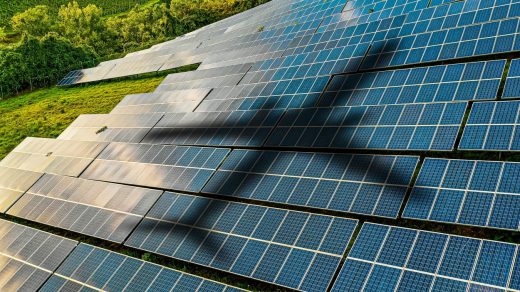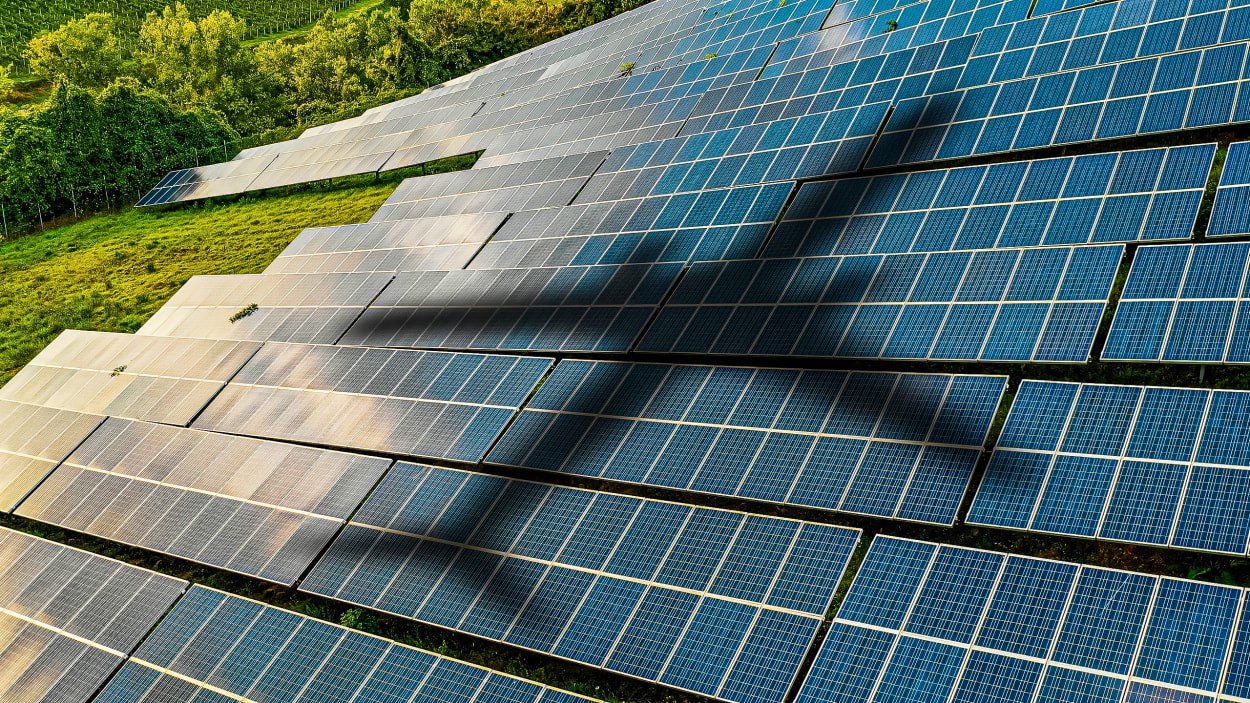Kansas City has plans to build the nation’s largest solar array—at the airport
By Sean Cudahy
In 2026, Kansas City will host matches as part of the FIFA World Cup, drawing visitors—and eyeballs—from around the world.
And the city has big plans for what players, media and fans will find when they land at Kansas City International Airport.
Sure, there’s the brand new, $1.5 billion, LEED-certified terminal unveiled earlier this year.
But between now and the first match’s kickoff, city leaders hope to surround the terminal with one of the nation’s most robust solar farms that could someday power the equivalent of 70,000 Kansas City homes.
In an announcement some two years in the making, city officials in August revealed formal plans to negotiate with a group of four private companies that would, together, lease airport land and install solar arrays across thousands of acres of green space near the runways.
Suffice to say, it would be a major shift from farming on the airport’s excess land which, under Federal Aviation Administration (FAA) guidance, is heavily restricted and generally unsuitable for much large-scale development.
“We recognize that we have an incredible amount of land,” says Kansas City, Missouri Mayor Quinton Lucas, explaining the thinking. “We realized that planting corn and having truck stops was, really, not actually the most sustainable approach to have.”
The city hopes a first phase will produce a 136-acre solar array that would generate enough clean energy to power 4,500 homes. That alone, the city claims, would be the largest such facility at an American airport.
But the plans go much further.
A 2022, city-commissioned study found the airport has at least 3,100 acres that could be suitable for solar panels, capable of someday generating up to 500 of megawatts for the power grid (one megawatt is enough to power 1.2 average homes for a year).
It’s an intriguing prospect, especially after cold snaps in the deep south have taxed the power supply in recent winters.
And it’s a concept our nation’s airports are pondering with increasing interest.
Kansas City is far from the only major U.S. airport that’s wondered if the fields around its runways might be put to more sustainable use.
Just in recent weeks, workers broke ground on a large solar farm on the grounds of Dulles International Airport outside Washington, to be built and operated by Dominion Energy in Virginia.
Instead of paying rent to the airport authority, though, the power company plans to provide Dulles with solar carports in its parking lots—as well as dozens of electric buses and vehicles and charging stations.
Virginia Senator Mark Warner called the partnership a “model” for future renewable energy projects.
But it’s not the only model. From Denver to Sacramento and Indianapolis, numerous other airports have allowed companies to adorn their land with solar panels, each with their own unique arrangements.
In Indianapolis, the airport’s solar energy feeds directly into the grid, but the airport gladly collects money from the company that built and operates the arrays, and the revenue helps offset the taxpayer-funded airport’s operating costs.
“It’s commercially viable, it’s sustainable,” says Indianapolis project manager Kent Ebbing. “It works out really well for utility providers, the customers that consume it, and the Airport Authority. Everybody wins.”
Ebbing says he’s taken calls from numerous cities eyeing similar installations on airport land—a trend perhaps explained by a 2018 FAA report that deemed airports an ideal location for solar farms “because of the available space … unobstructed terrain, and energy demand.”
That growing interest in solar facilities on airfields prompted the agency to issue safety guidance two years ago, imploring airport operators to inspect any such development for “glint and glare,” to ensure the panels don’t interfere with the vision line of pilots or air traffic control personnel.
In Kansas City, it’s but one factor for the aviation department to keep in mind as they negotiate the particulars of their own lease with the consortium featuring a local utility, construction company, design firm, and solar/battery developer.
But Lucas, the city’s mayor, is optimistic the project will have shovels in the ground by early next year, and ultimately be a reliable money-maker for the city in the long term.
“I think another part of it, for Kansas City, is airports … are kind of centerpieces of innovation,” he adds. “We have all this great sustainable technology there. We have kind of a showcase of ‘Kansas City at its best.’ So how do we make sure we can do even more with it?”
(56)



